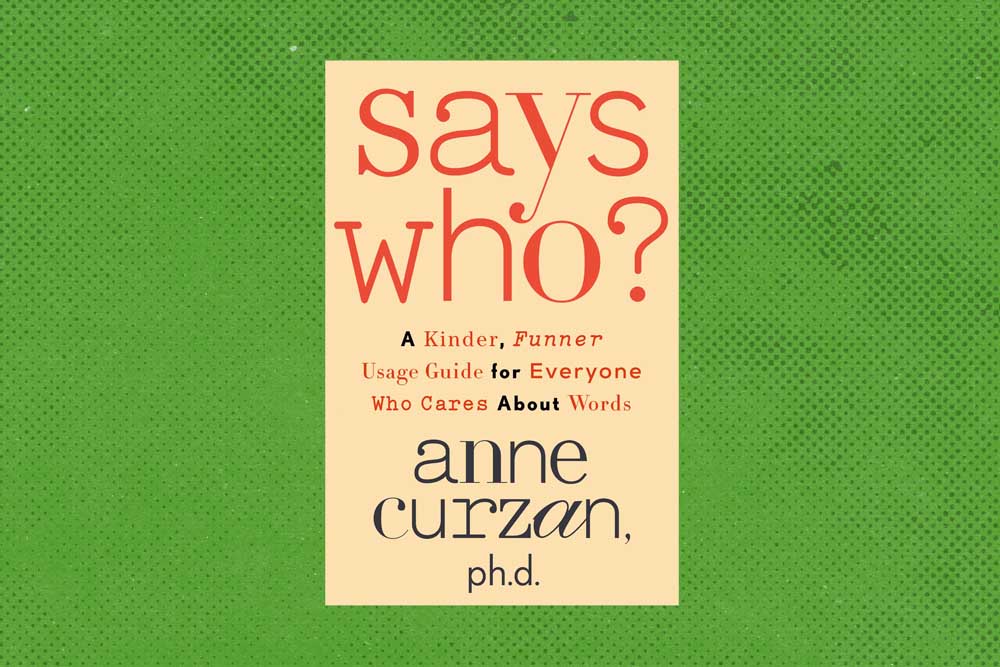Book review: Stop trying to make language ‘funner,’ grammar rules exist for a reason
Published 9:00 pm Thursday, April 25, 2024

- books-curzan
Because my no-nonsense mother habitually said “He don’t” and “She don’t,” and my moody steelworker father never opened a book after he quit school at 16, it may seem surprising that I became a stickler for correct English as well as a serious reader. Or perhaps not. To this day, though, I dislike faddish words, vulgarisms, most slang, weaselly euphemisms, clichés, and prose styles that are overly chummy, preachy or hip. When I write, I do my best to sound grown-up but try not to come across as a bewildered holdover from the 19th century.
So I should have been wary when I picked up Anne Curzan’s “Says Who? A Kinder, Funner Usage Guide for Everyone Who Cares About Words.” “Funner” provocatively signals that this isn’t a book for someone like me. Instead, “Says Who?” pointedly aims to defuse common anxieties over what is “proper” and “improper” usage.
To do this, Curzan, dean of the College of Literature, Science and the Arts at the University of Michigan, contends that virtually every grammar or vocabulary no-no you learned from Miss Thistlebottom is wrong or out of date. In olden days, a grammatical slip was looked on as something shocking, but now, it would seem, almost anything goes. You can use “like” instead of “as” and “as if,” “who” instead of “whom,” even “irregardless,” regardless of the mute scorn of linguistic “grammandos.” For these last, the barbarisms are always at the gates.
Curzan repeatedly emphasizes that language evolves, that we should welcome change, that new words express new ideas and thoughts. No one would argue otherwise. Yet rules define any game. Grammar helps us to say what we mean and others to know rather than guess what we’re talking about.
In her own prose, Curzan tries hard to downplay any soupçon of the didactic by adopting an up-to-date, friendly cheeriness. For my taste, she goes too far. She loads on the maple syrup, tacitly assuming that no one will pay attention to her linguistic points without a lot of sweetening. Perhaps she’s right, but I find this approach implicitly demeaning. But then, I would probably register somewhere in the middle of what Curzan calls her “crankiness meter.”
I say “middle” because I do agree with Curzan about the importance of what she calls “kinder,” more inclusive language and usage that avoids giving offense. To advocate for such sensitivity is a key purpose of her book. As she notes, it’s one thing to say “How tall is he?” and quite another to ask “How short is he?” Though essentially the same question, one is neutral and the other judgmental.
Yet even if we all need to be more understanding and less captious about some aspects of our changing language, Curzan doesn’t stress strongly enough the consequences of using vulgar, ugly and slovenly English. As with clothes and manners, the issue is what the sociologist Erving Goffman called the presentation of self in everyday life. Miss Eliza Doolittle can testify that if you talk like a Cockney flower girl, the world will regard you as a Cockney flower girl, but if you talk like a duchess, it will treat you as one. Fundamentally, you may be as gentle and sensitive as Saint Francis of Assisi, but if your English is loose, ungrammatical and crude, or alternatively if it’s pretentious, circumlocutory and condescending, people will think you are either stupid or a pompous blowhard. It’s hard to undo the effects of first impressions.
Polonius once asked Hamlet, “What do you read, my lord?” To which the melancholy Dane answered, “Words, words, words.” Anne Curzan and I both love the English language, she being more accepting of the new, while I instinctively value established grammar and usage as bulwarks against confusion, not a set of fetters that bind us.
We both agree that people’s use of English brings consequences, often unforeseen and unintended. All of us, then, need to choose our words wisely. But which ones? “That,” as Hamlet once also said, “is the question.”








